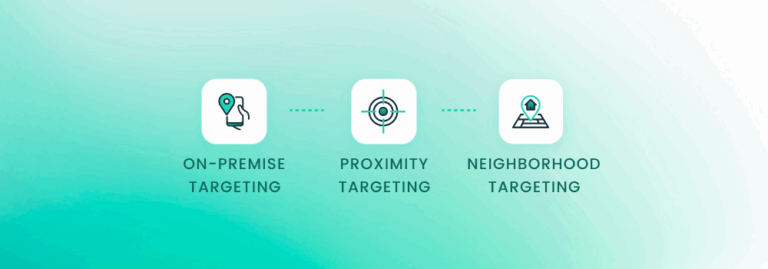A major discussion at this year’s Advertising Week in New York was how to measure performance. Budgets are tight for agencies, brands, and customers alike. For advertisers to run successful campaigns, they need to pay attention to what’s working and where their media spend is driving real business results.
At GroundTruth, we know those results happen more efficiently when brands and agencies track real-world behaviors. Performance metrics and industry trends inform where teams should start. However, it is real-world behaviors that drive the innovation and creative thinking necessary for lasting success.
Today, I want to talk about why.
1. Real-World Behaviors Reveal Blind Spots
As marketers, we know the value of the products and services we advertise. But, we don’t know what we don’t know. Real-world behaviors, like in-store visits, reveal exactly what motivates customers to walk through the doors and into the checkout line.
When we start to understand why various audiences show up to our locations, we can start to fill in the blanks on failing campaigns. Instead of giving up on a low-performing campaign, we can try more targeted ads based on the behaviors we want more of. We can also see more clearly what new trends and technologies will fit with our customers and which we should ignore. Focused attention on your target audience is a major factor in developing effective ad campaigns.
2. Teams Don’t Have to Guess When They Follow Customer Behavior
Similarly, when teams know what their customers want, based on verified behaviors and habits, they don’t have to spend time guessing. So many campaigns fail, not because the strategy was wrong, but because the team wasted too many resources in spaces that didn’t have the attention of their target audiences.
A fast-casual restaurant, for example, could use CTV ads to get in front of families within five miles of their newest location. But just introducing yourself to new neighbors won’t guarantee butts-in-seats. For that, brands need compelling ads on mobile or time-sensitive, exclusive offers through channels like direct mail. When your team knows which customers are most likely to show up, based on their previous real-world behavior, the guesswork is reduced dramatically. Now, all the creative energy on the team can focus on the moment of conversion, when you see real business results.
3. Optimizing Happens In Real Time
The other benefit of using audience segments based on real-world behaviors is optimizing campaigns in real time. When shoppers show up to your store, refer a friend, or any other real-world behavior, marketers have an opportunity to learn directly from the source. Asking shoppers why they came while they’re in the store, encouraging them to fill out a survey, using loyalty programs or ad partners with real-world data all provide more information about who you should be targeting and where.
Using online behavior to inform audience segments can help highlight new opportunities at the top of the funnel. That’s a critical element to growing any business. But, where innovation and optimization counts the most is in those down-funnel customer engagements. Getting people to convert more quickly, and with less ad spend, means a more efficient marketing engine overall. That starts with identifying and optimizing for ads that reach customers most likely to take the high-value actions, like store visits and verified purchases.
4. Real-World Behaviors Bring What’s Important Into Focus
Finally, real-world behaviors illuminate what products or services your company should focus on. For example, if a restaurant wants to open another location, but can’t decide between three possible options, they can rely on the real-world behaviors of those specific neighborhoods to show which is the best bet. They can look into how many existing customers surround each location and how many people visit that particular retail block. Or how many people in a 10-mile radius eat at competitors’ restaurants before they make a decision.
With real-world behavior data, companies can push for real business results that will drive future success. What’s more, foot traffic and spending habits will always be available to advertisers as data they can use to drive ad campaigns. Building innovative campaigns based on reliable, accurate data is the key to success in today’s market.





